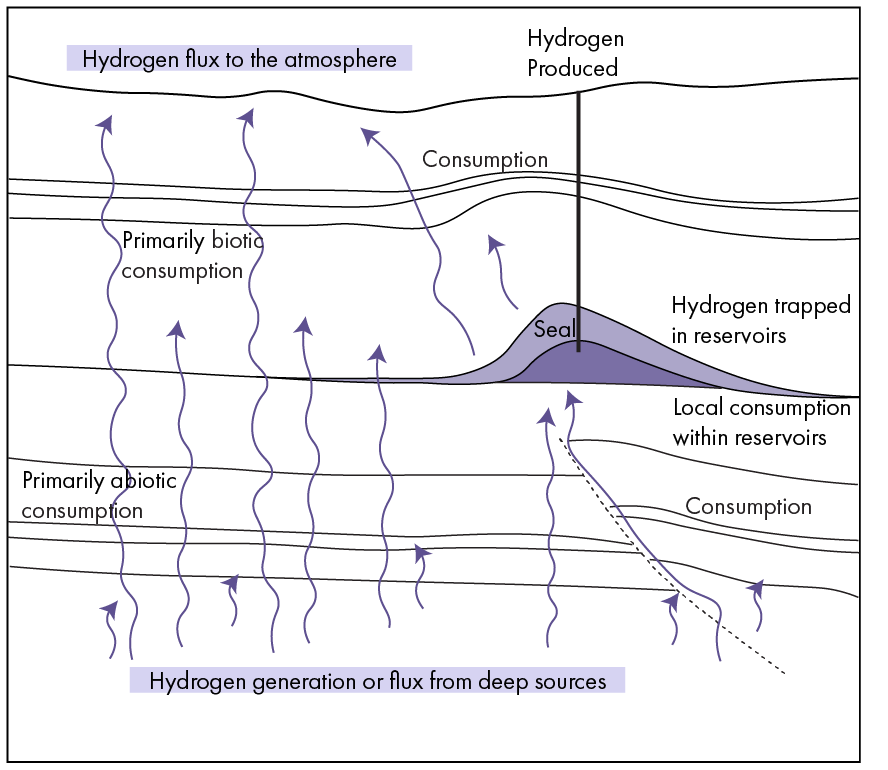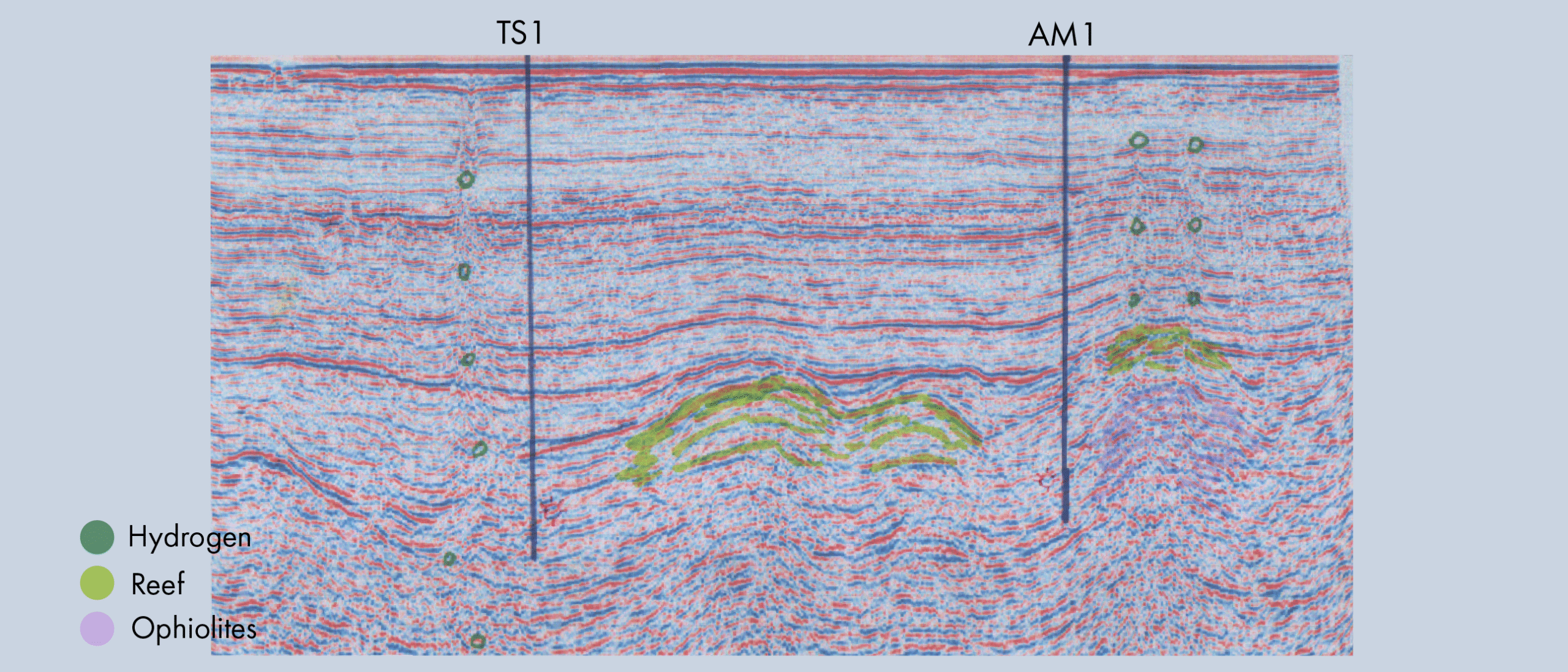Over the last few years, there has been a continuous stream of news coverage on “ground-breaking natural-hydrogen discoveries.” A paper by Ellis and Gelman, published late last year, very much fit that narrative and made furore in mainstream media and social media: “Model predictions of global geologic hydrogen resources.”
Ellis and Gelman use a mathematical model to work out global hydrogen fluxes and trapping. They assume a “trapping efficiency fraction” of 0.01 (1 %), inspired by petroleum analogues, to arrive at a “most likely” (P50) estimate of “Hydrogen-In-Place” trapped in the subsurface globally, of ~5.6 million Mt.

However, the geological settings that comprise the “petroleum-analogue trapping efficiency” used in Ellis and Gelman’s model are mostly limited to sedimentary basins, where the petroleum traps are. In other geological provinces, for example in cratonic shields or oceanic crust, hydrogen fluxes may still occur even though trapping – if any – would be in relatively small quantities and from rocks that are unfavourable to resource recovery. Therefore, it would have been much better to split Ellis and Gelman’s “global fluxes” model into different crustal domains such as sedimentary basins, cratonic shields, and oceans.
Each crustal domain will then have its own range in hydrogen flux; low in sedimentary basins, high in oceanic crust, medium on cratonic shields. The chance of trapping can also be refined to high in sedimentary basins, low on cratons and medium in oceans. Model results would have been more realistic this way.
Considering that sedimentary basins occupy about 17 % of the earth’s surface, a reality check on Ellis and Gelman’s model results can be performed. Assuming hydrogen fluxes are uniform across different settings, Ellis and Gelman’s model implies that trapped hydrogen-in-place across the sedimentary basins globally may be around 17 % * 5.6 = 950 thousand Mt. In energy terms, 34 million TWh or 20 trillion barrels of oil equivalent.
This then allows a comparison with oil and gas resource quantities. Oil production to date and expected in the near future amounts to some 3.15 trillion BOE. Gas production historically and in the near future adds another 2 trillion boe. Assuming a recovery factor for oil of 10 % and for gas of 50 %, the in-place quantities of oil and gas consistent with all this historic production and reserves may amount to some 35 trillion BOE.
In other words, Ellis and Gelman’s estimate of hydrogen-in-place, scaled to the sedimentary basins, is a similar order of magnitude as the hydrocarbon-in-place equivalent of all historic oil- and gas production and remaining reserves.
It then appears extremely odd that despite decades of exploration during which globally, tens of thousands of wells were sampled for detailed gas-composition analysis and millions of wells were logged with neutron-density tools capable of detecting hydrogen, no hydrogen gas fields were discovered. That is not to say such fields cannot exist. But it does suggest that the Ellis and Gelman in-place hydrogen numbers have very little bearing on reality.




